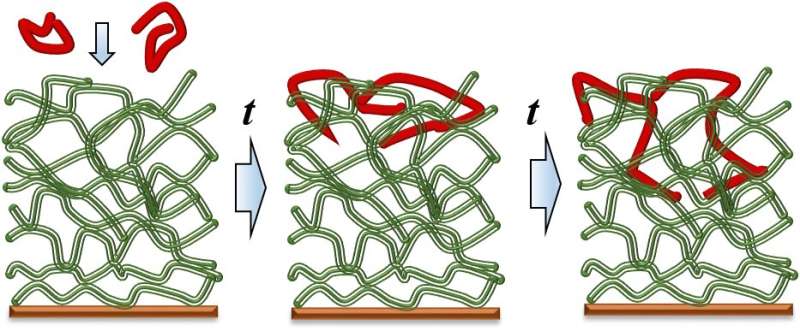Credit: Texas A&M University
Researchers in the Department of Materials Science and Engineering at Texas A&M University, led by doctoral student Victor Selin and Dr. Svetlana Sukhishvili, are making headway in understanding fundamental principles that will help to create the next generation of biomedical coatings.
Medical devices, such as orthopedic implants, often need their surfaces modified with protective coatings. These devices have random shapes, which requires the use of a superficial method to controllably coat the surface. These coatings can provide the surface of the objects with antireflection properties or make them able to release therapeutic compounds that kill bacteria and/or control the growth of mammalian cells.
The group is working to gain a fundamental understanding of the growth and behavior of multilayer polymer films to create functional films on the surface of different materials and aims to be able to control their properties and structures. These properties are important because they dictate how such films interact with aqueous and salinated solutions. Their work has revealed that by simple manipulations during film buildup, these properties can be easily controlled.
"By demonstrating how one can control the mobility of individual polymer chains layer-by-layer, we hope to facilitate practical applications of these films as a platform for functionalization of surfaces of biomedical devices," Selin said.
Credit: Texas A&M University
Using several techniques, the group established a quantitative picture of the internal structure and polymer chain dynamics of these films. These experiments allowed the group to correlate the film properties with the behavior of individual polymer chains.
"The knowledge we are developing is needed to learn how to design surface coatings that will be able to controllably release multiple therapeutic agents," Selin said. "Our research provides a better understanding of the relationship between assembly conditions and the internal structure of resulting films, and therefore significantly contributes to the existing fundamental knowledge in polymer physics and materials science."
Provided by Texas A&M University

























